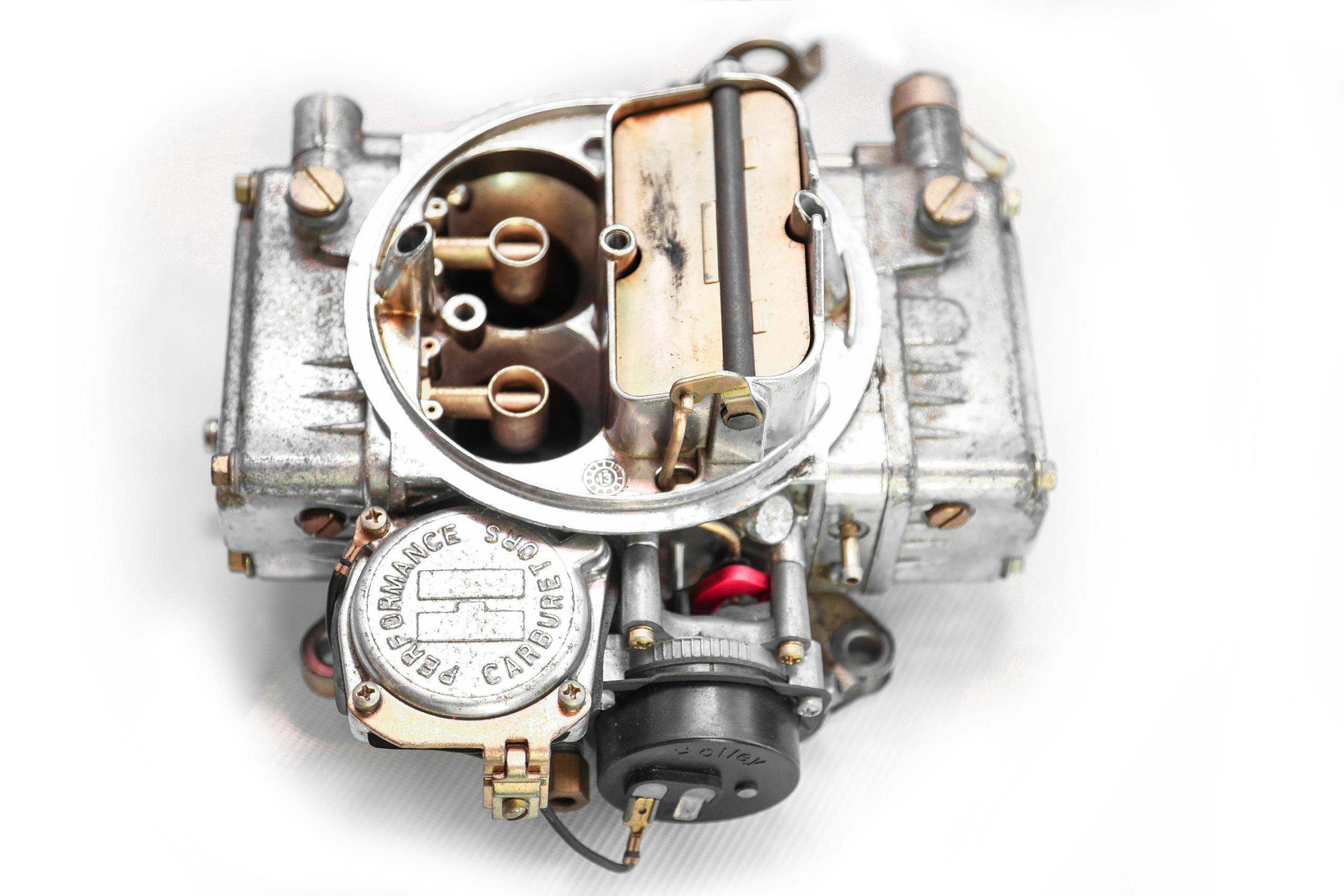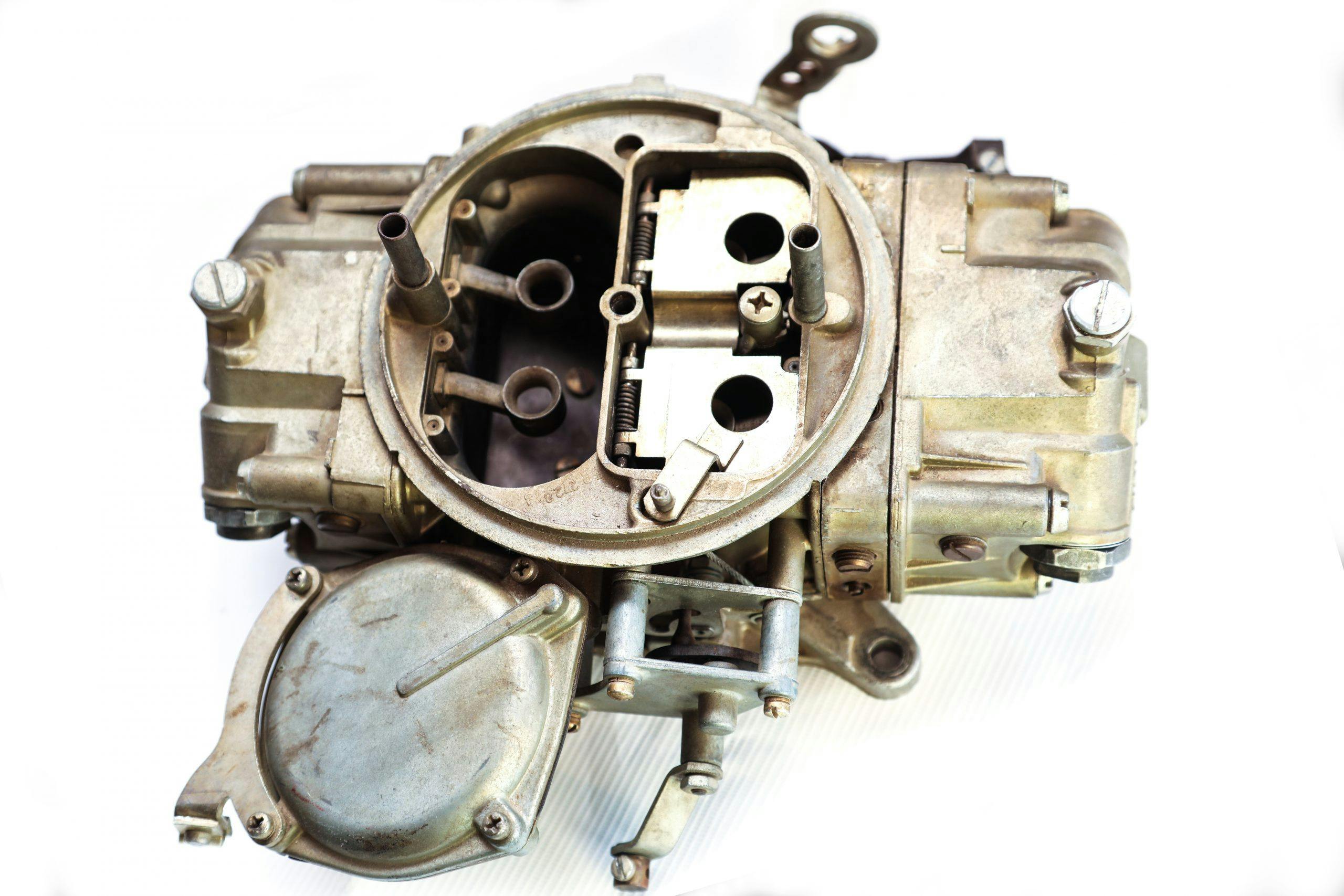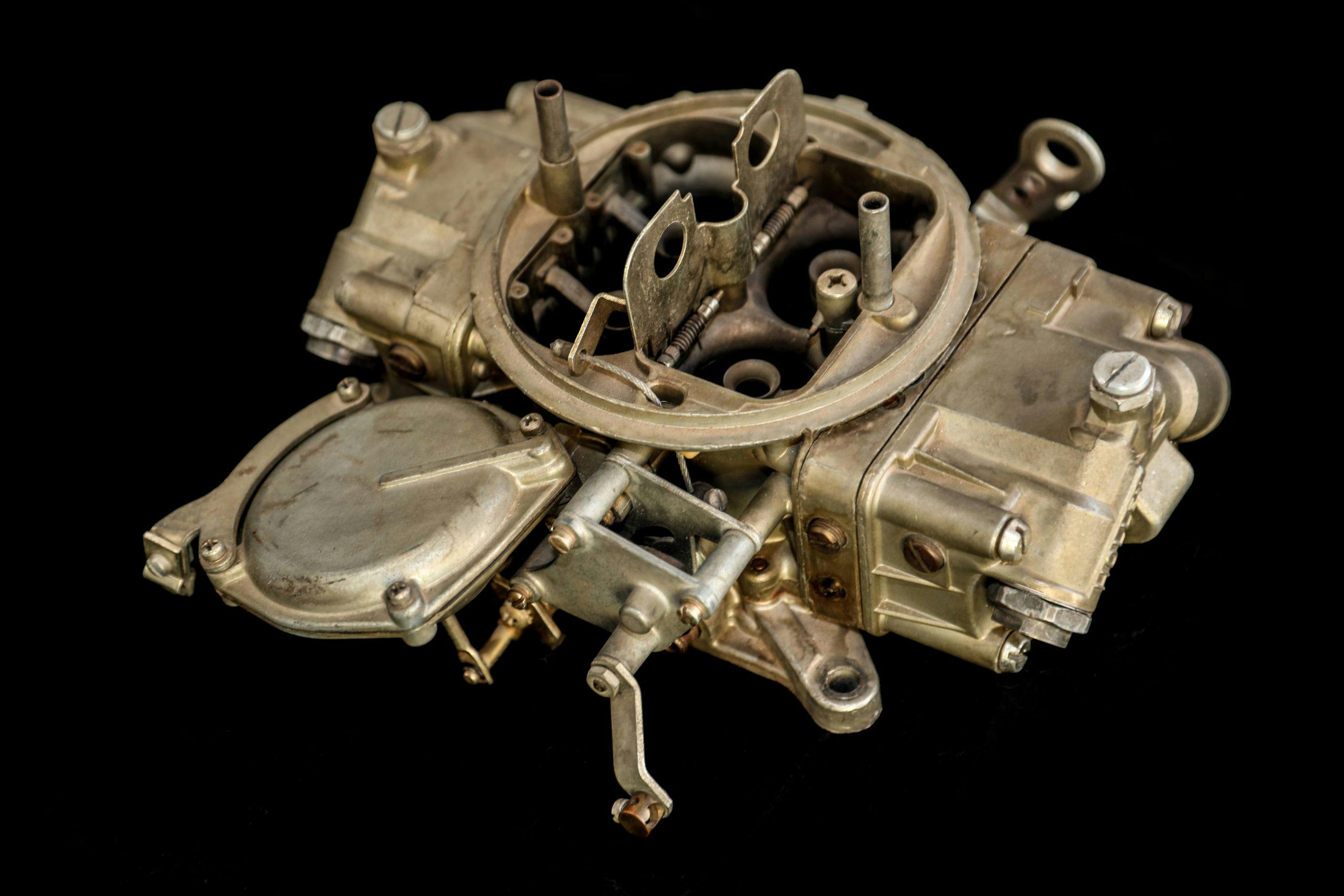Media | Articles
The 3160: Holley’s forgotten performance carburetor
Holley’s three-barrel existed within a small window of history where it was one of the meanest street carburetors you could get. Today, information on them is hard to come by.
For more than a decade, performance engines could be easily spotted by just a quick glance at their carburetor, or carburetors. When it came to American V-8-powered cars, economy models would typically sport a single two-barrel that would do its best to sip fuel. More performance-oriented models would include a four-barrel carb. Flashier models, from Oldsmobiles and Tri-Power Pontiacs to muscular FE Fords, big-block and small-block Mopars, and 427 Corvettes, flexed a trio of two-barrel carbs. Some cars even announced their performance with a pair of four barrels. Cadillacs, Chevy small-blocks, Super Duty Pontiacs, 7-litre Fords, and various brands of Chrysler Corporation cars used dual four-barrel carbs from the factory either inline or splayed on top of cross-ram intakes of various design.
By the late 1960s, GM was leaning away from multi-carb induction and banned any car but Corvette from using it. Even Chevrolet’s most potent big-blocks like the L88 and ZL1 relied on the simplicity of a single carburetor. Race sanctioning bodies like NASCAR were also mandating single four-barrel induction, leading to some ingenious solutions. It seemed that enthusiasts at the time were also more focused on single four-barrel street engines, jumping to dual four-barrel tunnel rams only for the ultimate in race performance.
The need for multiple carburetors was born from the simple demand of more airflow through the engine. Carburetors are rated for the amount of air they can get into an engine, and typical street V-8s run four-barrel carburetors in the 650–850 cubic feet per minute (CFM) range. If you want to make more power, whether by spinning the engine faster or by adding more displacement, the air has to come through the carb first.
Marketplace
Buy and sell classics with confidence
Contemporary aftermarket testing showed that these 950CFM three-barrels could eke out more power than the typical hot-rodder-favorite 780CFM Holley 4160, especially at higher engine speeds, simply by posing less of an airflow restriction. One of the downsides was its cost. In the vintage test we found in the September 1967 issue of HOT ROD, the 4160 four-barrel cost a paltry $80, while the three-barrel was $150. Adjusted for inflation, that would be more than $1100 today.
The single, wide secondary butterfly also posed some challenges. Many dual-plane manifolds feature a split plenum that would need to be modified to allow the secondary throttle plate to open. Edelbrock made an intake with these carbs in mind. Named C-3B for “Chevrolet three-barrel,” it came with the plenum divider milled down in the rear. The size of the secondary throttle blade also meant that a larger vacuum diaphragm was needed for it to open. The vacuum housing is larger in diameter than a soda can and an obvious clue that it isn’t your run-of-the-mill 750CFM Holley. If you need to rebuild one, good luck finding that secondary diaphragm; it seems they’re long out of production.
Compare the traditional Holley four-barrel vacuum diaphragm housing on the left to the three-barrel on the right.
These carburetors pop up on eBay fairly regularly, usually with “Hemi,” “Yenko,” or “Baldwin-Motion” in the title, but there’s not much information to be found on which tuners were installing them on their hot street packages.
Holley seemed to make its 3160 carbs obsolete with the introduction of the 4500 series carburetor in 1969. With a larger flange size, the 4500, known as the Dominator, could fit larger, 2.0-inch throttle bores and flow 1050CFM. It debuted in Ford’s NASCAR 429 that year and would be available over the counter in 1970 in various configurations. It became the carb of choice for high-horsepower street cars and drag racers due to its performance potential and, perhaps just as likely for many car builders, its menacing looks. An H.P. Books publication from 1976 titled Holley Carburetors & Manifolds doesn’t even mention the 3160, and information is hard to come by online.
The 3160’s large secondary may be a bit more prone to bogging down than your average Holley, but by many accounts, Holley’s three-barrel carb is just as easy to tune as its four-barrel brethren. They lend a great late-’60s look for a “day two” car, and for a mildly modified big-block with ported heads—and perhaps a roller cam—it might not be a bad choice. We’d think twice about grinding down any rare manifolds to make one fit though.
If anyone has any information sources on these carbs or if you have your own stories about running one, let us know in the comments below.


















I ran one on a 440 Gtx 1968 and that thing ran the best, I love that carb no trouble at all.
I have the 3 barrel and mating to the 69 GM Alum heads ‘074s. It’s going on a 67 SS/RS 396 4 Spd 4.11 ,Ci Camaro, I recently bought back after 21 years. She’s on F.B. under my name, Howard Fry.
I had the 950 with 50cc acc. Pump victor Jr. Intake on a 11 to 1 350 and loved it.
I own one of these 3 barrels carburetors that I am planning to sell
I just installed one on my 69 gto with a 428 pontiac ported heads and intake. It has the e-tubes on the secondary. Runs like a beast. When the vacume secondary open you need too hang on. My question is with the air cleaner lid on the secondarys struggle too open. Are the vacum springs interchagable with the regular 4160 model or is that a unicorn too find like the diaphram?
Had a 3 Barrel on a Chevrolet
427 NASCAR MOTOR
” Smokey ” Yunick helped ME build .
Think It Was a 1050 CFM .
Bought 1050 3 barrel
Brand new in 1969 and a aluminum intake
Put on a 440 375 hp motor
Never had a bit of problems
One of the fastest street racers in Cleveland
Right out of the box bolt it on and go!!!
I have one could use a rebuild been in a drawer for years never been apart would consider selling
holley 950 cfm carb
holley 950 cfm carb for sale
holley 950 cfm carb for sale
holley 950 3 barrel carb for sale 608-289-5926 WI
hello
…i just bought a 1969 hotrod and they had an advertisement for one…..ive owned mine since summer of 1989.
never have used it..bought it at great lakes dragway swapmeet at drag and boogie weekend…..uncle had one on a 1969 firebird 400 in 1970..said it went better than ever but so did the fuel..lee stock,belleville wi..
My dad worked for Holley for 45 years. In 1968 he designed the 3 barrel carburetor at Holley as a joke. Holley loved it and ran with it. My dad, Bill (William) Beaver, was known in those days as Mr. Holley. He was transferred from Detroit to Bowling Green in the 80s after it became Colt Industries. When he retired, they gave him a gold plated carburetor. My brother still has it. Dad did a lot of carburetor work at home after retirement. Mom and dad moved back to Michigan in 2016 and dad passed that December at age 82.9 – 2 weeks short of his 83rd birthday. My brother still lives in Michigan.
Wow, what a fantastic story! Thank you for sharing this!!!
Great story!
Mr Holley! Awesomeness 💯 The knowledge he must have obtained over the years. Did he ever write a book?
He would have been the Video King of Holley Carbs. Sorry for your loss. The Hot rod community could have learned a lot from this man. I’m sure some did!
There is a good diaphragm and housing for sale on eBay currently.
https://www.ebay.com/itm/386307562196?mkcid=16&mkevt=1&mkrid=711-127632-2357-0&ssspo=blmcmcv2rhs&sssrc=4429486&ssuid=mapmARggT7u&var=&widget_ver=artemis&media=COPY
Bought a 70 roadrunner 383 automatic new. Had a 3 barrel carb with a big problem off the line. One of the baffle plates between the body and float bowl had a very fine crack from the factory. As the dealer was rebuilding it for the third time, I asked to watch. I was a mechanic for B&P motor express at the time. When the mech took it apart and sprayed the parts down with carb cleaner, I saw the crack! They took a carb off a superbird in the showroom and put on mine! Ran good after that. BTW, it was about $3200 new, my monthly payment was $96 for three years! To have that car today, along with the two 55 Chevys, and the 64 Pontiac Grand Prix, Mecum auction prices today, wow! Now I have an 11 year old Taurus ltd, and a 2017 Buick envision SUV. My wife of 59 years and haul around our grandchildren and great grand daughter. Enjoy life,love, and cars. It goes by fast. HAHD!
I had one on a 327 with 11to1compression. And .500 lift cam. It worked awesome.
I had to laugh when I ran across this article. 3 Days before I turned 17 back in 66 I purchased a new 66 Chevelle SS 396/ 325HP. Knowing just about nothing about cars at that age I thought that bigger the Carb faster I should go. Living a few miles from Motion Performance I figured when I got a few bucks together In either 1968 or 1969, I can’t remember, I’d buy a 3 barrel. Well I bought it at Motion and bolted on my car. Every time I stepped on the gas it would tend to stall. So after a week of burning crazy amounts of Gas I unbolted it and put back the factory carb. I put it on a shelf in my garage and there is where it sat for the last 55 years. I think the one I have is a 1050 with what’s known as a squirter kit on it. Bigger is better, NO?
Since there are no car guys in my family it will end up in the garbage once I pass on.
Hi Joe, I`m looking for one of these carburetors and if its possible I would like to buy yours since it sounds like it should be very untouched and original. I have a vintage Edelbrock C427 that it will fit perfectly. Thanks Jimmy.
email: jimmyprostock@gmail.com